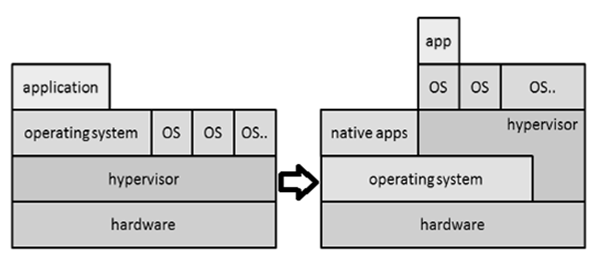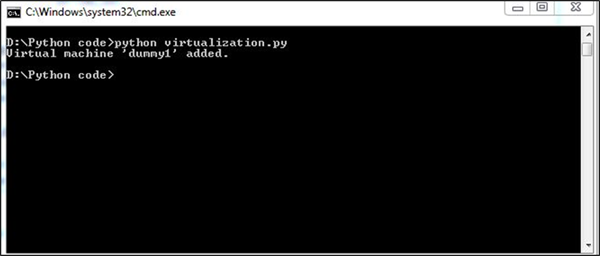
- Python Forensics Tutorial
- Home
- Introduction
- Installation of Python
- Overview of Python
- Basic Forensic Application
- Hash Function
- Cracking an Encryption
- Virtualization
- Network Forensics
- Python Modules
- Dshell and Scapy
- Searching
- Indexing
- Python Imaging Library
- Mobile Forensics
- Network Time Protocol
- Multiprocessing Support
- Memory & Forensics
- Forensics in Linux
- Indicators of Compromise
- Implementation of Cloud
- Python Forensics Useful Resources
- Python Forensics - Quick Guide
- Python Forensics - Useful Resources
- Python Forensics - Discussion
Python Forensics - Virtualization
Virtualization is the process of emulating IT systems such as servers, workstations, networks, and storage. It is nothing but the creation of a virtual rather than actual version of any operating system, a server, a storage device or network processes.
The main component which helps in emulation of virtual hardware is defined as a hyper-visor.
The following figure explains the two main types of system virtualization used.

Virtualization has been used in computational forensics in a number of ways. It helps the analyst in such a way that the workstation can be used in a validated state for each investigation. Data recovery is possible by attaching the dd image of a drive as a secondary drive on a virtual machine particularly. The same machine can be used as a recovery software to gather the evidences.
The following example helps in understanding the creation of a virtual machine with the help of Python programming language.
Step 1 − Let the virtual machine be named 'dummy1'.
Every virtual machine must have 512 MB of memory in minimum capacity, expressed in bytes.
vm_memory = 512 * 1024 * 1024
Step 2 − The virtual machine must be attached to the default cluster, which has been calculated.
vm_cluster = api.clusters.get(name = "Default")
Step 3 − The virtual machine must boot from the virtual hard disk drive.
vm_os = params.OperatingSystem(boot = [params.Boot(dev = "hd")])
All the options are combined into a virtual machine parameter object, before using the add method of the vms collection to the virtual machine.
Example
Following is the complete Python script for adding a virtual machine.
from ovirtsdk.api import API #importing API library
from ovirtsdk.xml import params
try: #Api credentials is required for virtual machine
api = API(url = "https://HOST",
username = "Radhika",
password = "a@123",
ca_file = "ca.crt")
vm_name = "dummy1"
vm_memory = 512 * 1024 * 1024 #calculating the memory in bytes
vm_cluster = api.clusters.get(name = "Default")
vm_template = api.templates.get(name = "Blank")
#assigning the parameters to operating system
vm_os = params.OperatingSystem(boot = [params.Boot(dev = "hd")])
vm_params = params.VM(name = vm_name,
memory = vm_memory,
cluster = vm_cluster,
template = vm_template
os = vm_os)
try:
api.vms.add(vm = vm_params)
print "Virtual machine '%s' added." % vm_name #output if it is successful.
except Exception as ex:
print "Adding virtual machine '%s' failed: %s" % (vm_name, ex)
api.disconnect()
except Exception as ex:
print "Unexpected error: %s" % ex
Output
Our code will produce the following output −
